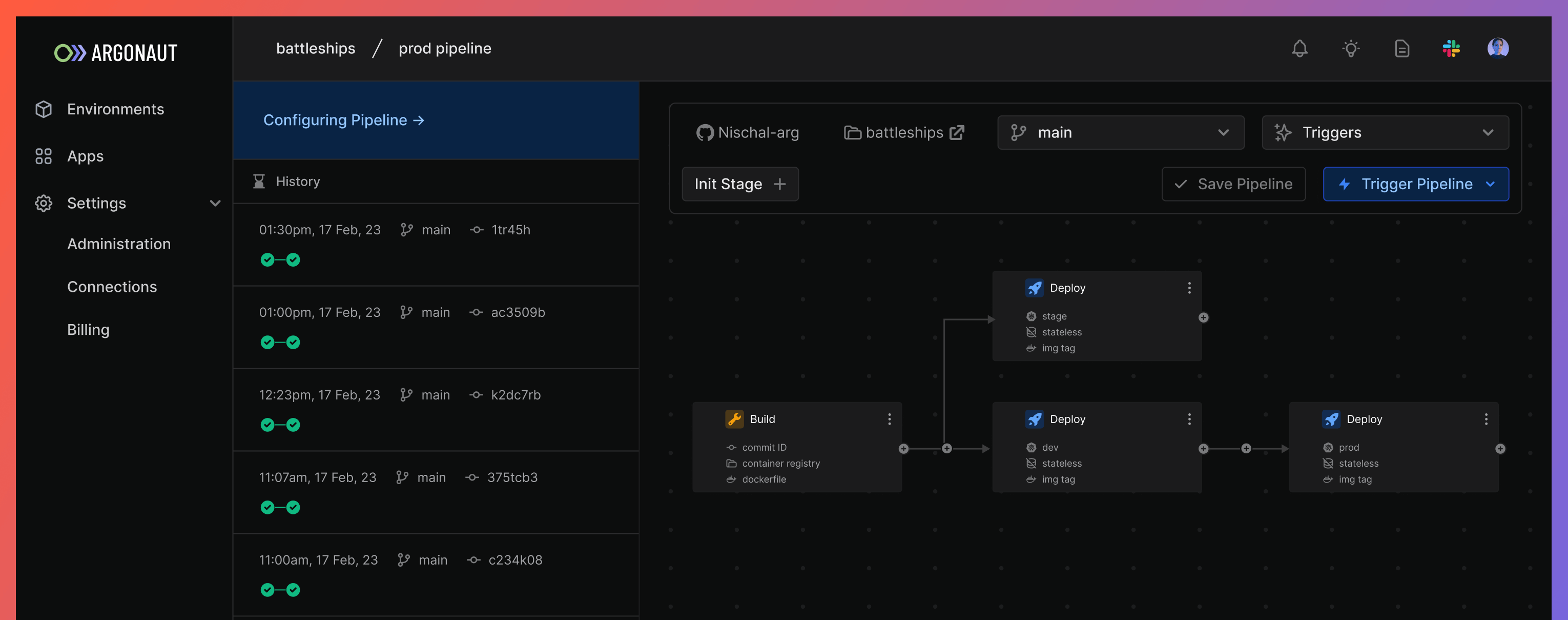Hello everyone, our June releases focuses on providing more flexibility and improving the performance of our product. Our biggest feature addition this month is the introduction of CI pipelines v2. This new version improves the deployment flow by adding more flexibility and customization options for our users. Several other changes make the UI faster and easier to use. Check out the details below.
There’s also a new YouTube series we just launched - Argonaut’s Insider series, where we cover the latest feature deep dives, discuss company processes, and more. Subscribe so you don’t miss the next episode. I’d also like to take this opportunity to once again welcome our two new team members, joining as Full stack engineers - Ananya and Abhijit.
⭐ NEW: CI pipelines v2
By Prajjwal, Subham
With CI pipelines, we separated the deployment and build into two independent stages. Now, with v2, users have the ability to create multiple build stages and multiple deploy stages in one pipeline. This makes it possible to have complex deployment pipelines, set triggers for each stage, check pipeline history, and more!
Common use cases are the ability to deploy to multiple environments in one single flow - either sequentially or in parallel. Users can now also use pre-built images from their repo to deploy directly without needing a separate build stage. What’s more, is that this change saves cost on builds as users can use a single build to deploy across multiple environments.

NEW: UI for attaching GPUs
By Abhijit
You can now attach GPUs to your apps in the deploy stage using the dedicated Attach GPU field. This is only enabled when the cluster you are planning to deploy already has GPU instances. Attach GPU value has to be a whole number less than or equal to the number of GPUs available in your cluster.

NEW: Resource requests
By Ananya
We have a new UI to set and update each app's CPU and Memory requests and limits. This can be found under the deployment stage of the specific app. You can now choose milliCPU or CPU for the CPU resource and Mi, M, Gi, and G for the memory resource. Here is an interesting article exploring the different sizes and how to manage them.

CHANGED: Infra modules
By Pavan, Prajjwal, and Aadhav
Improved infra modules to make the create flows even more capable. Here are a list of modules changed:
- ElastiCache default version is now set to
v7.0 - RDS now supports PostgreSQL engine version 15.
- MariaDB instance types can now be selected from the dropdown, users don’t need to manually specify instance types as text.
- DocumentDB default version is now set to
5.0.0 - General improvements in MSK, SQS, ElasticSearch and Aurora Serverless.
CHANGED: Performance improvements
By Abhijit
Users will now see improved performance on the following screens: App list screen, Infra resources screen, Deploy config screen and Invite to the workspace.
CHANGED: Faster infra APIs
By Prashant R
Infra APIs have been improved so that you will see faster loads on the Infra page and environment page. For example, a list of 5 infra components that were taking 750ms now takes just 250ms.
Other minor changes and fixes:
- The essential install for ingress-nginx versions has been anchored to v4.6.1.
- Deployment APIs are more stable now. Previously the internal repo wasn’t being created due to an internal failure.
- Fixed issue in cloud connection
- Improved performance in raw art.yml editor mode
- Fixed issue with cloud provider icon
- Minor UI improvements across the product

